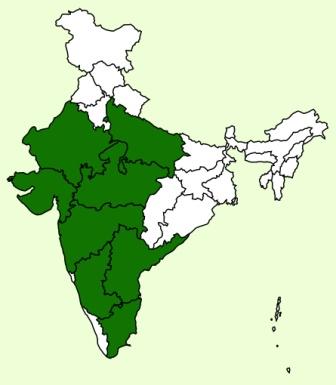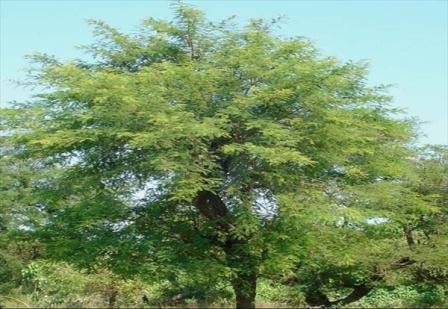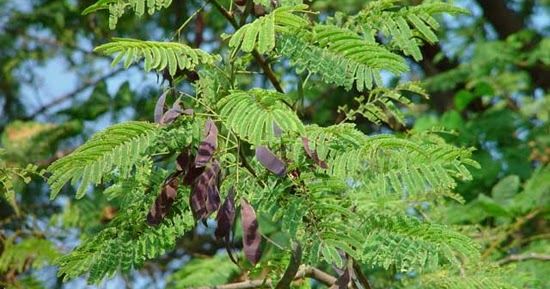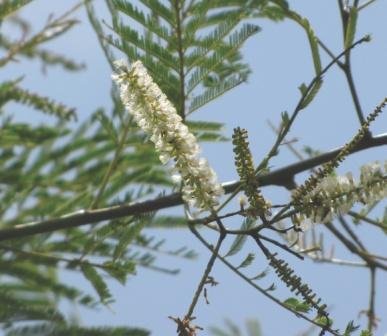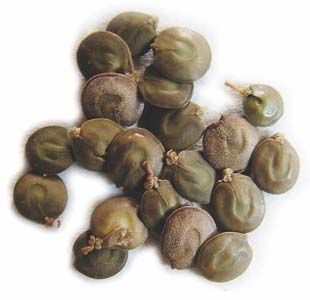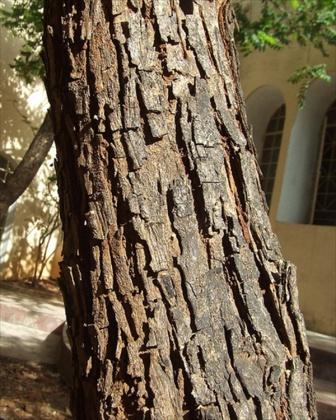Natural Regeneration :
- Natural regeneration is unpredictable and unreliable due to may silvicultural reasons.
- Coppices are obtained from moderate sized trees only.
- Natural regeneration through seed can be expected only under very favourable conditions.
Artificial Regeneration :
- This is the easiest and quickest and surest method for khair.
- It can be establishedby direct sowing and Nursery raised seedlings
Seed collection and Storage :
- The tree seeds well almost every year and produce fertile seeds at an early age.
- Seed ripens in November - December till February
- Pods are collected off the tree by lopping branches.
- Seeds are susceptible to insect attack while on tree, so it should be collect when they are just to ripe.
- The pods are dried in sun and thrashed to separate seeds.
- Properly cleaned seeds are stored in air tight container for not more than 6-8 months.
- Germination percent is 5 to 17 after one year storage and 9 % after 2 year storage.
- Only freshly collected seeds are used as khair is a good seeded every year.
- About 40,000 seeds weigh one kg. 10. The No of pods is about 4590 per Kg.
- Seed yield per tree is about 0.5 to 2.0 kg.
Seed Treatment :
- Presowing treatment of seed with sulphuric acid hastens germination.
- Soaking in cooling boiled water for 6 hrs is more effective or soaking in cold water for 24 hrs.
Nursery Technique :
Nursery Beds :
- Sowing can be done in well prepared nursery beds in February-March.
- The seed beds must have well drained Sandy-loam soils.
- Spacing adopted is 20 cm between lines and 2 cm between the seeds in line.
- Depth of sowing is about 0.5 cm.
- Immediate watering to seeds beds should be ensured.
- Germination begins in 5-7 days.
- After sufficient growth seedlings are transferred from the seed beds to polybags of size 10 cm x 15 cm.
Poly bag Seedlings :
- Polybags of size 22 cm x 9 cm or 23 cm x 13 cm are filled with good mixture of sandy loam and FYM.
- Two seeds are sown per bag at a depth of 1.5 cm in February-March.
- The germination starts in a week and completes in 2nd week.
- Germination % 70-80.
- Poly bags are regularly watered.
- Nitrogenous fertilizer of 2 gm. per plant is applied about 4 times during May and June.
- The seedlings become fit for planting out in July when they are about 3-4 months old and 50-60 cm high.
Plantation technique :
Polybag plants :
- The 30 cm3 pit at a spacing of 3m x 3m or 2.5m x 2.5m are prepared in advance to allow weathering of soil.
- Planting is done on the onset of monsoon.
- Before transporting the seedlings to the planting site, plants are professedly watered.
Stump Planting :
- Stumps are prepared from 12-15 months old seedlings.
- The collar diameter of the stumps should be above 10 mm.
- Planting of stump should be done soon after the break of monsoon.
Fodder planting:
Care & Disease Control :
Tending:
- Game proof fence is necessary for 4-5 years as khair is liked by livestock and wild animals.
Weeding:
- After one month of planting weeding and bush clearing around the plant is carried out in August-September. Three weeding is necessary in the first year, 2 in the second year and one in the third year.
Thinning:
- First thing not beyond 5th year and subsequentthinning’s are done at the ages of 10,15,20,and 25 years.
Irrigation :
For proper growth and survival it is necessary to give one or two waterings afterplanting. This is specifically required in arid regions. Irrigation after planting is not a prerequisite in areas having sufficient soil moisture and precipitation. Higher survival rate and better rate of growth is reported when soil and water conservation measures are also adopted.
Recommended Harvest :
20-70 years.
Yield :
- Fodder - approx. 123.5 q/ha
Major uses :
Katha and Cutch :
- The most important product obtained from khair which is internally used in pan preparation and in medicines.
- Dark Cutch is largely used for dying cotton & Silk, Preserving fish nets, manufacture of stencils and printer's ink.
Fodder: Good
- fodder tree and is extensively lopped for goats and cattle’s.
Gum :
- very good quality of gum is obtained
Wood :
- Timber is very hard and moderately tough and difficult to saw.
- It is used for making agricultural implements,tool handles,house posts, oil and sugar can crushes, keels of boats, spokes and hubs of wheel.
Hardboards:
- Spent chips after extraction of Katha and cutch are utilized for preparation of hard board.
Fuel Wood :
- It is a good source of fulewood which has a calorific value of 5200 K cal/Kg and yeilds good quality of charcoal.
Other uses :
Tanning:
The astringent bark is sometimes used for tanning.
Lac:
Khair is a very good host plant for growing the Katki or Aghani crop in alternation with the normal Rangeeni or Kusumi hosts. This species is unsuitable for the Baisakhi or fethwi crops due to non-possession of sufficient vitality during the late winter and early hot weather months to bear a lac crop. This species is best used for raising the Aghani crop and produces an encrustation equal in quality and quantity to that produced on kusum (Schleichera oleosa). The brood from the infestation of khair with kusum brood takes very well when used to infect kusum again in January-February. The resulting lac is of good quality.
Gum:
The gum from khair is said to be of very good quality and is regarded as the best substitute for true gum arabic. The tears may be as large as 3 cm in diameter and pale yellow to dark amber in colour. It is not collected separately and is generally mixed up with other Acacia gums.
Market details :
- Approximately Rs.3000 to 5000/ton.
Carbon stock :
0.652 tC/tree


